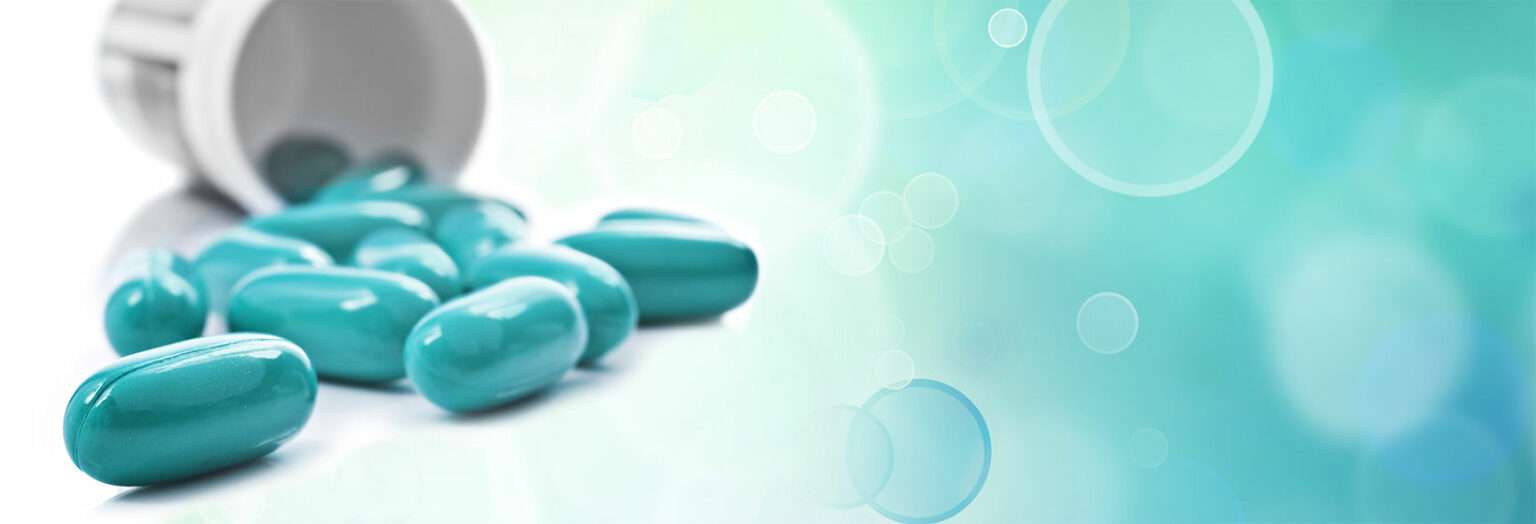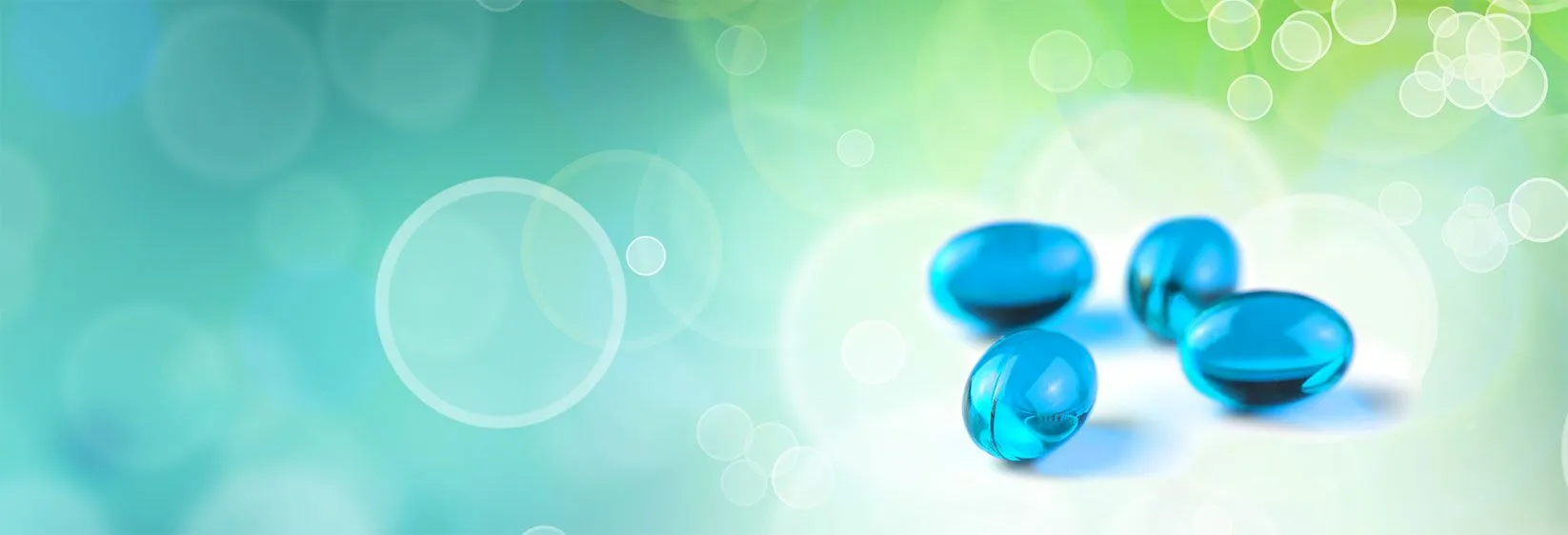Contact Us
- Solutions
- Resources
- About
- Contact Us
close
Optional callout banner for highlighted news or events
Learn More
The global soft gel capsules (SGCs) market size was valued at $4.4 billion in 2021, and is projected to reach $7.5 billion by 2031, growing at a CAGR of 5.4% from 2022 to 2031.1 Soft gelatin capsules, also known as soft gels or soft elastic capsules, are hermetically sealed one-piece capsules containing a liquid or a semisolid fill without a bubble of air or gas. They are made from a flexible gelatin film that is plasticized by the addition of glycerin, sorbitol or a similar polyol. Some of the factors responsible for the expected surge in growth are increased R&D activities to support usage of soft gel capsules, demand for soft gel health supplements, a rise in consumer awareness related to preventive healthcare, and a growing geriatric population.1
SGCs represent an innovative way of developing bioavailable and stable, precise unit dosage forms. They come in a variety of shapes, colors, finishes, and flavors, and can be used to mask bitter or bad tasting drugs. Notably, encapsulating drugs into SGCs is a way to deliver poorly soluble API to the systemic circulation to overcome formulation hurdles related to biopharmaceutics classification system (BCS) class II or class IV compounds that are poorly absorbed by the body which ultimately impacts the efficacy of the drug. Soft gels enable rapid absorption because the APIs they contain can be specially formulated in a solution or suspension using lipidic or appropriate excipients to maximize bioavailability. But there are also formulation challenges and considerations to keep in mind when developing SGCs. According to a paper published in Pharmaceutics, SGC can be expensive to produce, requiring specialized equipment more commonly offered by contract manufacturers.
Additionally, SGCs are affected by heat, humidity, and microbial contamination, causing product stability issues. Depending on the nature of the drug, it could migrate into the shell impacting release rate leading to absorption issues in the body. Because SGCs are not able to contain water-based liquids, the medication could actually diffuse out of the capsule.2 For many, though, the benefits outweigh the challenges. A skilled CDMO can address these challenges to ensure the success of your soft gel capsule at each development stage: shell, drug fill, and the process of putting the two together.

The gelatin itself can be one of the obstacles formulators face when manufacturing soft gels. Gelatin is typically an animal-derived material, but is also highly water soluble. While this solubility allows for rapid dissolution when ingested, it also makes the capsules sensitive to heat and humidity, ultimately impacting shelf life. Shell formulation for SGCs typically consists of gelatin, plasticizer(s), water, and other minor additives such as colorants (brand and product identification), flavors, opacifiers (for light-sensitive compounds), sweeteners, and possibly sugar, preservatives, and, in rare cases, active ingredients.
The shell characteristics that a skilled soft gel capsule CDMO will focus on include the following:
Gelatin type. Gelatin can be classified into two types, which is determined by gelatin pretreatment during the gelatin manufacturing process. Type A gelatin is obtained from acid-treated collagen, whereas Type B gelatin is derived from an alkali-treated precursor.3 Type A is more resistant to acidic hydrolysis; Type B more resistant to alkaline hydrolysis. Formulators will choose a gelatin type based on the pH of the fill formulation. Gelatin, plasticizer(s) and water can all be adjusted based on the pH of the fill to ensure compatibility with the shell.

In recent years, the fill composition of SGCs has evolved from lipophilic to hydrophilic solutions/suspensions and complex self-emulsifying systems due to requirements from new chemical entities and biopharmaceutical formulations.2 Hydrophilic SGC fill formulations are based on polyethylene glycols (PEGs), and this includes low molecular weight PEGs and closely related compounds. Use of PEGs, especially with a low molecular weight such as PEG 200, PEG 300, and water should not exceed more than 10% of fill composition as they act as plasticizers as well for gelatin shell. PEG-based formulations are used to improve solubility, disperse low-dose and high-potency drugs, and improve bioavailability.
Solubility also affects the types of API that can be delivered in the soft gel capsule. The liquid fill must be primarily non-aqueous or oil-based, not water based, to prevent the solubilization of the outer gelatin shell in the fill liquid on storage. API can be either dissolved or suspended in the liquid fill. Suspensions are more complicated fills than solutions due to potential content uniformity issues from API settling. API particle size, suspension viscosity, and agitation speed must be optimized to achieve a uniform suspension. Keep in mind that alkaline or acidic solutions are not good candidates for soft gelatin fill because they can cause crosslinking or hydrolysis and shell leakage.2

When developing an SGC formulation, the possible interaction between the fill material and the gelatin shell must be considered. These interactions may happen during manufacturing, drying, or over the shelf-life of the product. Interactions could include a chemical reaction between fill components and oxidization or degradation products, and the shell or physical interaction such as migration of fill material into or through the shell, and vice versa.2 The extent of these interactions depends on the amount of each component in the shell and fill formulation. One of the most well-known problems of the shell formulation is associated with APIs or excipients containing reactive functional groups such as carbonyl, which can result in gelatin cross-linking.2 Cross-linking of gelatin occurs when the gelatin forms new bonds with itself or things in its environment. The reaction is generally irreversible and renders the gelatin insoluble.4 As gelatin is meant to dissolve quickly in water, once cross linking occurs, the gelatin either becomes hard to dissolve in water or will not dissolve at all.
Three of the key challenges in SGC manufacturing are:
Soft gels are a unique dosage form – they are solid dose capsules containing solution, suspension and semi-solid formulations. Soft gel capsules burst within minutes to disperse the formulated API in the GI tract for fast absorption. Soft gels also offer an opportunity to reformulate for the next generation and life cycle management of a product. A drug maker may consider reformulating a low solubility API tablet into soft gel to reduce the dose and improve bioavailability. Many new drugs have bioavailability challenges and soft gels are a good option (We will explore this topic in our next article in the soft gel series).
Pii has the experience, flexibility, and capacity to develop and manufacture your soft gel products. When it comes to soft gel capsules, bigger CDMOs prefer to handle larger projects. Pii can handle smaller batch sizes for supplying your clinical studies as well as scale up to support commercial size batches. As a full-service CDMO with expertise in soft gel capsules, Pii can provide a cost-effective approach for your molecule, and save you months in formulation development time, and significantly lower your development and manufacturing costs.


Sundeep Sethia joined Pii in September 2018 as Senior Director of Pharmaceutical R&D. He has over 15 years of experience in the pharmaceutical industry.
Dr. Sethia formerly served as the Director of Pharmaceutical R&D at Amneal Pharmaceuticals. Prior to Amneal, he held positions of increasing responsibility at both Teva and Barr Laboratories in R&D. His expertise is in drug development across a broad range of therapeutic areas and dosage forms. He has a proven track record in generic drug development and approvals.
Dr. Sethia received his Ph.D. in Pharmaceutical Sciences from St. John’s University, NY. He earned a Master’s and a Bachelor’s degree in Biotechnology and Pharmacy, respectively from Jadavpur University in India. He has co-authored various peer-reviewed scientific publications and patents/patent applications.
Like what you read? Share with your network: